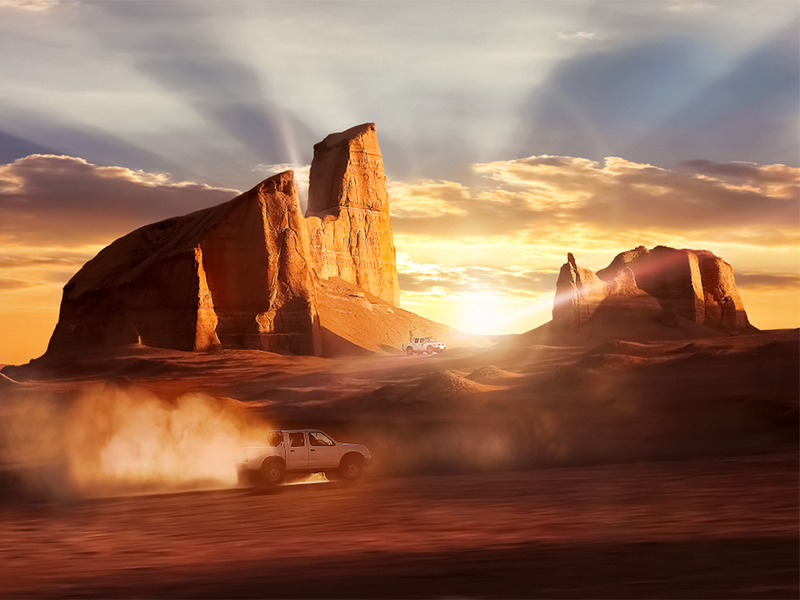Lut Desert, also known as Dasht-e Lut, is one of the most valuable and largest deserts in central Iran, recognized as one of the country’s most beautiful natural areas. This vast and endless desert covers parts of Kerman, Sistan Baluchestan, and South Khorasan provinces, and is known as one of Iran’s dry and extremely hot regions. Lut Desert showcases breathtaking and diverse landscapes, including plains, sand dunes, sandy hills, salt marshes, and dry and salty deserts. It has become a popular tourist destination for adventurers and desert enthusiasts, offering a unique and extraordinary experience. If you are interested in desert exploration, join us at Eligasht as we delve deeper into the Lut Desert and its vegetation cover.
Book Iran Air flights from London to Tehran and Tehran to London with Eligasht UK:
Difference between Desert and Desert region
Many people are not aware of the differences between a desert and a desert region, often considering them the same. However, there are significant distinctions between these two areas. Both desert and desert regions are related to dry and waterless regions, but they have notable differences. The term “desert” is used for areas that suffer from water scarcity, have minimal vegetation density, and are characterized by salty and saline soils, which prevent any plant growth. Desert regions are often in proximity to a desert or are subsets of a larger desert.
In contrast, deserts can be found in various geographical areas such as deserts, coastlines, and mountains. Deserts are regions that receive minimal rainfall but have enough to sustain minimal vegetation and wildlife. Therefore, Lut, known as the Lut Desert, is considered a desert due to its vastness and the vegetation cover it possesses in its central part. The Lut Desert is just a small section of this extensive desert.
Where is the Lut Desert?
The Lut Desert is located in southeastern Iran, spanning three provinces: Kerman, Sistan and Baluchestan, and South Khorasan. It extends from north to south, covering an area of 900 kilometers, and from east to west, it spans 300 kilometers. This desert is a dry region, known as one of the most famous desert areas in Iran and the world. It features unique natural phenomena such as kaluts (sand formations), sandy and rocky hills, and dunes. The Lut Desert is recognized as a popular natural and adventurous tourist destination for travelers and nature enthusiasts who appreciate the vast desert landscapes and its beauty.
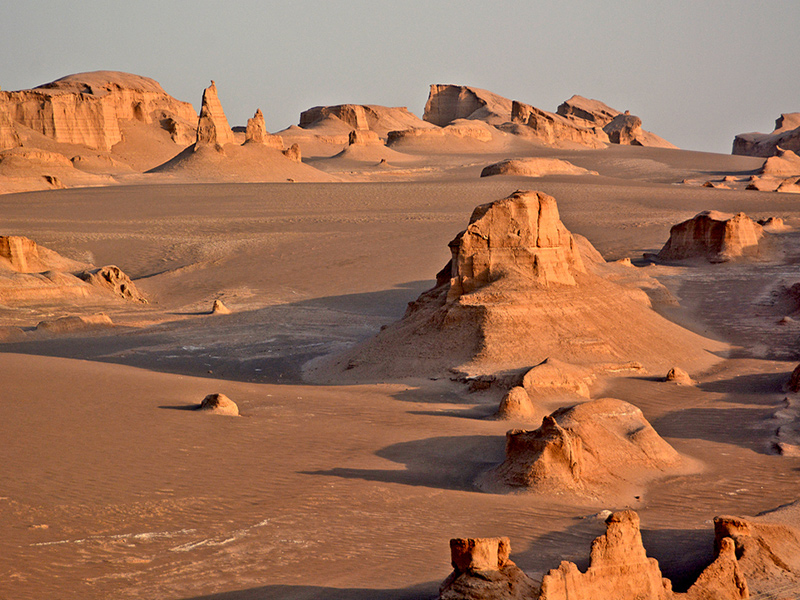
Related posts:
Boutique Hotels in Kashan: A Dreamy Stay in the Heart of History
Travel Guide to the Mysterious Desert of Rig-e Jenn, the Bermuda Triangle of Iran Importance of the Lut Desert
The Lut Desert holds great significance due to its unique combination of mountains, stunning natural landscapes, diverse vegetation, and its fundamental role in geology. It is known as one of the largest hot and arid deserts in the world, offering beautiful natural scenery that attracts photographers and tourists. This region is also recognized as a suitable environment for environmental studies and climate research. Therefore, the Lut Desert holds great importance as one of the prominent deserts globally, serving as a destination for scientific research and providing a magnificent natural experience for tourists from around the world.
The hottest place on Earth
The Lut Desert holds the record for one of the hottest places on Earth. In 2005, a temperature of 70.7 degrees Celsius (159.3 degrees Fahrenheit) was recorded, making it the hottest surface temperature ever documented. The extreme heat is attributed to the combination of the desert’s low elevation and its proximity to surrounding mountain ranges, which trap hot air and prevent it from escaping.
UNESCO World Heritage Site
Recognizing the unique natural and cultural value of the Lut Desert, UNESCO designated it as a World Heritage Site in 2016. This prestigious recognition highlights the importance of preserving and protecting this extraordinary desert, ensuring its conservation for future generations to admire and study.
Different Parts of the Lut Desert
The Lut Desert is known as one of the most important desert regions globally, encompassing dry and desert areas, kaluts, salt hills, and captivating landscapes. Due to its geographical location, the Desert receives significant attention from researchers and tourists. The desert is divided into various parts, including:
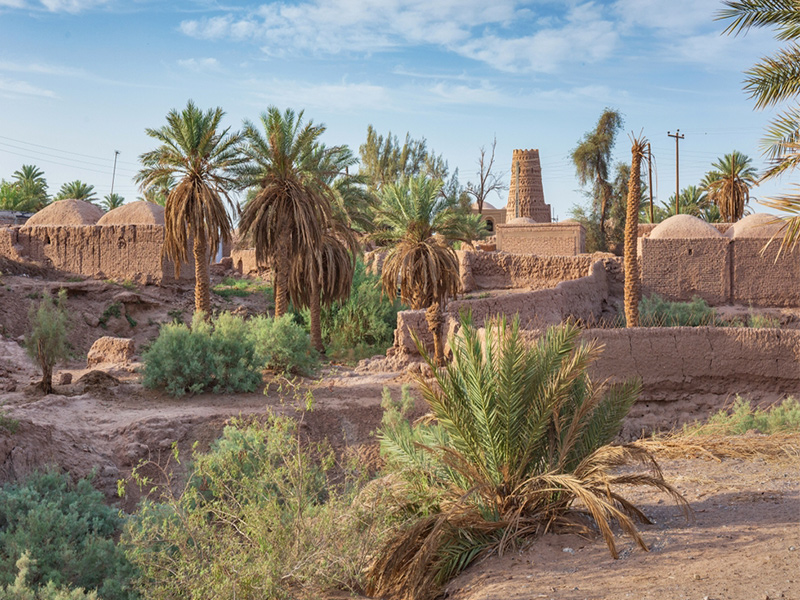
1. Northern Lut
The Northern Lut, also known as Lut-e Khorasan or Lut-e Birjand, is the widest and highest section of the Lut Desert. It is located primarily in South Khorasan and Birjand. The altitude of the Northern Lut ranges from 1,000 meters in the north to 500 meters as you move south. This area consists of sandy and rocky hills, sedimentary and volcanic mountains, and irregular rifts.
2. Central Lut
The Central Lut, situated in the central part of the Lut Desert, is the most diverse section, featuring the Lut Hole (Chah-e Lut). It spans 162 kilometers in length and 52 kilometers in width. This section comprises salt and gypsum deserts, as well as large sand dunes, including the “Malek Mohammad Desert” in the western part of the Yilan sand ridge.
3. Southern Lut
The Southern Lut, also known as “Lut-e Zangi Mohammad,” is the southernmost part of the Lut Desert. It is primarily located in Kerman northern Sistan and Baluchestan. This area showcases diverse vegetation, and remnants of ancient civilizations, and is divided into three geological regions: Dasht-e Sari (tilted towards the Central Lut), kaluts, and sandy hills.
Attractions around
The surrounding region of the Desert, one of Iran’s natural wonders, is full of tourist attractions. Some notable attractions include the Shafiabad Castle, a caravanserai located in the village of Shafiabad, the Shour River, Shahdad Water Reservoir, Lake Lut, and more. Additionally, the cities of Kerman and Shahdad offer various tourist attractions such as Ganjali Khan Complex, Shazdeh Mahan Garden, Gandom Beryan, Shahdad Rattel Gorge, Kalshur River, Ramouk Castle, and Jabalieh Dome.
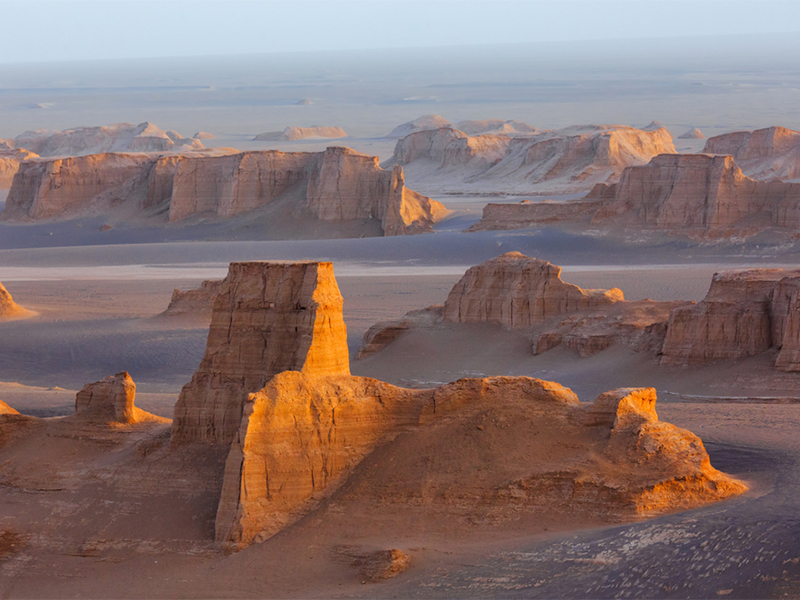
Lut Desert Vegetation
Due to the dry conditions and extremely hot climate prevalent in the Desert, it has less diversity of vegetation compared to other regions of the world. However, despite the harsh climatic conditions, this desert boasts unique environmental and plant diversity. During the spring season and following short rains, grasses grow in the area, adding color and beauty to this desert. These seasonal changes have turned Lut into a diverse and attractive destination for botanists and nature enthusiasts. One of the regions where vegetation grows is the Yilan Sand Ridge, which is home to sand-loving plants such as tumbleweeds, “Nebka,” or sand pots, Tagh, and Nasi.
Staying in Lut Desert
Staying in the Lut Desert offers a unique and enriching experience filled with natural and indigenous delights. There are various options for accommodation in this area. From camping amid sand dunes and clots to staying in desert camps where tourists can choose a bed for sleep and rest, the facilities are available in this region. These desert camps and accommodations offer amenities such as electricity, toilets and bathrooms, drinking water, coffee shops, and stores. Some of these include Shehdad Desert Camp, Eco Camp Setareh in Malekabad village, Aqiq Ecotourism, Clot, Gandum Beryan, Kashkiloo, Nebka, Yadegar, Toranj, Darafsh, and Shabhaye Porsetareh.
Activities in Lut Desert
Activities in the Lut Desert provide a unique experience of nature and adventure for travel enthusiasts. This vast desert is located in southeastern Iran and is known for its beautiful landscapes and golden sands. Activities in the Lut Desert include off-roading, safari tours, camel riding, motorcycling, desert trekking, and photography. Additionally, tourists can enjoy the sunrise and sunset in the Lut and explore the desert’s highlands. Overall, the Lut is a unique destination for adventurous activities and an opportunity to familiarize oneself with the beautiful desert nature of Iran.
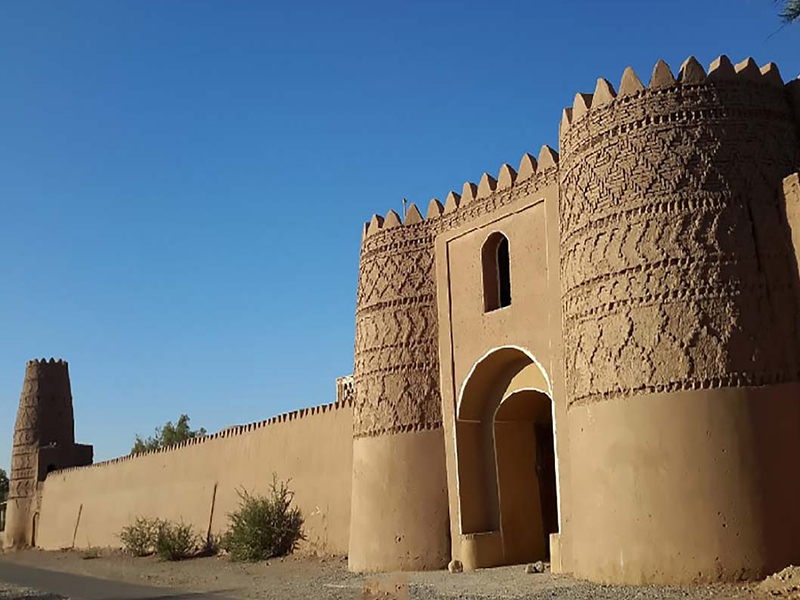
Access Route
If you intend to travel to the Lut Desert, you must first travel to Kerman and then proceed to Shahdad to reach the Lut Desert. The access route to Lut Desert by car from Tehran towards Shahdad takes approximately 10 hours, and after entering the Lut Road, due to clots and rough roads, you need to continue the route for about 2 more hours to reach the desert.
If you plan to travel by train or plane, you can reach Kerman from anywhere in Iran and then take a bus to Shahdad and cover the 45-kilometer route to reach Lut.
Final Words
Lut Desert, with all its grandeur and natural beauty, is considered one of Iran’s and the world’s precious natural treasures. This dry and scorching region, in addition to attracting tourists from around the world, offers a suitable opportunity for scientific researchers and geologists to study environmental changes and conduct scientific research. This remarkable area in the heart of Iran provides a unique attraction and an exciting opportunity for everyone to interact with nature and enjoy desert exploration and thrilling activities using the provided facilities.
FAQ
1- What makes Lut Desert unique and worth visiting?
Lut Desert is renowned for its captivating natural beauty and remarkable features. It holds the title of being one of the hottest places on Earth and is home to stunning sand dunes, salt flats, and unique geological formations. Its otherworldly landscapes, breathtaking sunsets, and opportunities for desert activities like camel riding and off-roading make it a must-visit destination for nature enthusiasts and adventure seekers.
2- Is it safe to visit the Lut Desert considering its extreme climate?
While Lut Desert’s climate can be harsh, proper preparation and precautions can ensure a safe visit. It’s essential to plan your trip during milder seasons like spring or autumn when temperatures are more moderate. It’s advisable to carry sufficient water, protective clothing, and sunblock to combat the intense heat. Additionally, it’s recommended to travel with a knowledgeable guide who is familiar with the area and can ensure your safety.
3- Are there any restrictions or permits required to visit the Lut Desert?
generally, there are no specific permits required to visit the Desert. However, it’s always a good idea to check the latest travel advisories and regulations before your trip. It’s also important to respect the natural environment and adhere to any guidelines provided by local authorities or tour operators. Some areas within Lut Desert may have restricted access due to conservation efforts, so it’s best to plan your itinerary accordingly.
